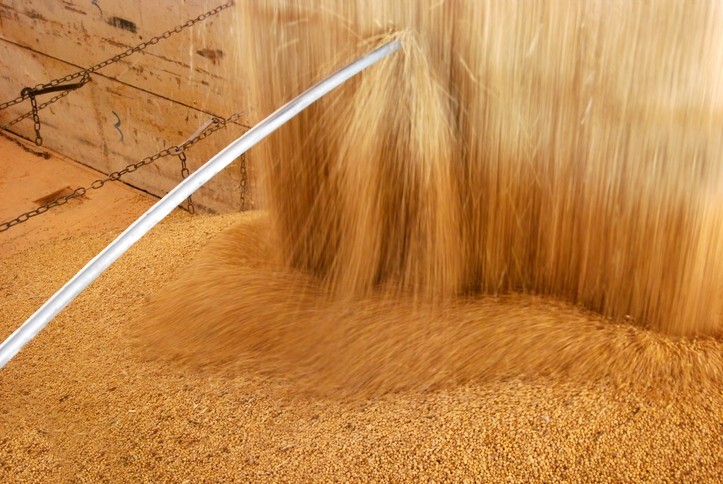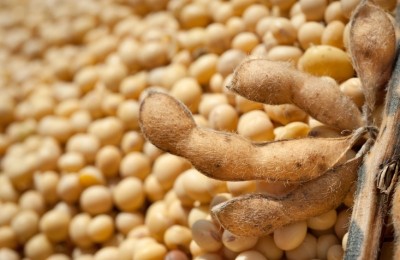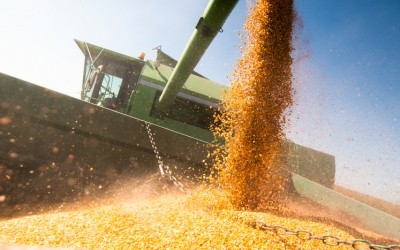USDA: US corn struggles in export market, while soy sales climb

The US Department of Agriculture (USDA) released updated feed and grain crop production and trade information in a new World Agricultural Supply and Demand Estimates (WASDE) report Tuesday [February 11].
Overall, anticipated production for US feed crops did not see much change, the USDA reported. However, corn exports are expected to decline based on the slow pace of sales, while sales of soybeans increase.
According to the WASDE report, US production of corn for 2019/20 saw adjustments in export levels and the amount of corn used in ethanol. Export expectations fell 50m bushels based on sale pace in January. However, the shift was offset by the increase in corn use in ethanol.
The season-average corn price remains at $3.85 per bushel, wrote the USDA.
Internationally, coarse grain production in 2019/20 has been raised 0.9m tons with the anticipation of increased production, use and smaller stocks, found WASDE.
Corn production globally was increased 0.8m tons based on crops in South Africa, Moldova and Ukraine offsetting reduced production in Vietnam, as per the USDA data.
Corn exports are expected to drop for the US and be offset by sales from South Africa, Ukraine and the EU, the department said. Imports are expected to increase for Turkey and Brazil.
“Foreign corn ending stocks are down from last month, mostly reflecting reductions for Vietnam, Brazil, Paraguay, and the EU,” the USDA report noted. “Global corn ending stocks, at 296.8m tons, are down 1m from last month.”
Soybean and oilseed production
US soybean producers are expected to face higher exports and reduced ending stocks, the USDA said. Exports in 2019/20 have been raised 50m bushels to a projected 1.825bn bushels based on increased sales to China.
Soybean ending stocks fell 50m bushels to 425m, reported the USDA. However, the US season-average soybean price for 2019/20 fell $0.25 to $8.75 based on reported prices, although, soybean meal price remains at $305 per short ton.
Globally, the anticipation is that oilseeds will see increased production, trade and stocks, the department said. Oilseed production was increased 2.2m tons based on soybean, sunflower seed and cottonseed crops, which were only partly offset by decreased palm kernel production.
Soybean production was increased for Brazil and sunflower seed production was raised for Ukraine, the USDA said.
Oilseed exports were increased 2.5m tons based on the soybean market, the department said. China’s imports are anticipated to grow by 3m tons based on higher soybean crush and exports were increased for the US, Brazil and Ukraine.
Global ending stocks for soybeans were raised 2.2m tons based on stocks in Brazil and China, the department said.
Wheat forecast
The outlook for US wheat production in 2019/20 is for stable supplies, smaller ending stocks and larger exports, the USDA said. The increase in exports markets a “growing competitiveness” in global markets.
“Ending stocks are cut by a corresponding amount and are now forecast to total 940 million bushels, a five-year low,” the department said.
Globally, wheat supplies were reduced slightly based on production and adjustments to beginning stocks, the department said. Exports are anticipated to increase 1.8m tons with strong shipments from the EU and increased sales from Kazakhstan – while the US is on pace to have the largest exports in three years.
However, exports for Canada and Pakistan are anticipated to decline, the department said. Imports for 2019/20 were increased by 1.9m tons based on China and Turkey
Global consumption and ending stocks saw a slight drop, but ending stocks remain “record large,” the USDA reported.
In advance of the USDA’s report, we spoke with Indigo Ag. Inc. regarding their corn and soy production forecast for Brazil and Argentina.
The company uses satellite data and a series of algorithms to assess crop production and quality, said Rodney Connor, senior director global markets intelligence and analysis, Indigo. However, it shifts its focus from production in North America to production in South America throughout the year.
“Once its crop gets far enough along that we believe our satellites can tell us something about that crop, we shift our focus to South America,” he told us.
“The production in South America very much affects the price that a producer in North America is going to receive for his own crop in the future, what he’s already raised,” Connor said. “We would look for futures adjustments based on crop size in South America just from a world production standpoint, and then, more and more, we see destinations or purchasers of grain willing to shop and buy grain from countries that they maybe hadn’t bought from in the past.”
The Indigo Ag production report forecasts that corn production in Argentina has increased by about 5% to reach 44m metric tons (MT), while Brazil stayed at about 95m metric tons, the company reported. However, its predictions are lower than those of USDA.
For soybeans, combined yield estimates for both countries increased by 7%, Indigo found. It predicts 52m MT soy production in Argentina and about 115m MT soy output in Brazil.
Indigo does not anticipate record-setting production in those markets, Connor added.









